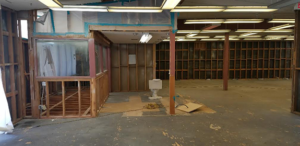Water heaters involve intricate systems that must be handled with care. The wrong actions can lead to leaks, gas-related issues, or electrical hazards.

Before beginning any installation, make sure to turn off the gas and water supply lines and test all connections for leaks with a water detector or soapy water solution. Insulating the water pipes can improve energy efficiency as well. Contact Water Heater Installation Denver for professional help.
The water heater is the heart of your home’s hot water system. Its installation and location are key to your comfort, safety and energy efficiency. Whether you choose a traditional tank model or an energy-efficient tankless water heater, proper installation is critical. Understanding local plumbing codes and hiring a professional to do the work will ensure your new unit functions properly and is up to code.
Start with a thorough evaluation of the space where the new water heater will be located, including its dimensions and access to the gas, electric and water lines. Verify the space has adequate ventilation and there’s enough room to move around it. Also, check that the water heater is positioned on solid blocks or concrete to minimize the risk of it falling and damaging pipes underneath it.
Shut off the water supply at the main water valve and turn off the electricity or gas to the existing water heater (if applicable). If you’re working with a gas water heater, shut it off at the gas line isolation valve. Using a non-contact voltage test pen or inexpensive multimeter, verify the electrical wiring is not energized. Then drain the water heater, disconnect its plumbing and electrical connections and remove it from the space.
Set the new water heater in a drain pan or on solid blocks to prevent it from leaking. Make sure the top of the new water heater is above the highest pipe stub. Install the cold and hot water supply pipes. Use copper tubing or galvanized flexible metal connectors, which are easy to solder. Or, if your house has PEX plumbing, use PEX supplies, which can be joined without the need to solder.
If you’re installing a new gas water heater, a chimney should be constructed to vent out the flue gases, reducing the risk of carbon monoxide poisoning. And, if you live in an earthquake-prone area, a seismic strap must be installed to stabilize the water heater and protect it from damage.
If you’re installing a new electric water heater, the Temperature and Pressure Relief Valve is factory-installed in the opening marked “T&P.” However, it is important to install a discharge pipe as well. The venting must be run in accordance with the manufacturer’s printed instructions to avoid serious injury or death from explosion.
Proper Connections
If you are a homeowner who intends to install your own water heater, it is important that you follow the manufacturer’s guidelines and consult with local plumbing codes to ensure proper installation. Failure to do so could result in a dangerous situation, which may lead to fire, damage, or even water loss. If you’re not comfortable handling the electrical aspects of this project, consider hiring a professional. Water heaters are complicated systems with a variety of electrical and plumbing components. An experienced installer will know how to handle these systems, minimizing the risk of gas-related problems and electrical hazards.
Whether you’re installing a new electric or gas model, you must first determine if power is currently running to the unit’s location. If it isn’t, you will need to run cable (2-pole, 30-amp breaker with 10-2NM cable) from the circuit to the tank location. Once the cable is run, a new circuit breaker must be installed at the location of the water heater. Before starting to make the electrical connections, you must drain the system by opening hot and cold taps positioned in locations closest to the system’s lowest point. This will allow the excess water to drain away from the system, preventing any damage to your new heater.
Before you begin making the electrical connections, you should disconnect the wires from your old water heater and mark them with pieces of tape to identify their location on the new heater. You will also want to remove the electrical cover plate located on the side or top of the unit and connect like colored wires together using a wire connector. You will also need to ground the incoming power supply wire to either a green ground screw on the tank or the water heater’s own ground lead.
After connecting the electrical wires, you will need to solder in new copper adapters for the hot and cold water lines. These will need to fit correctly into the water intake ports on the top of the unit. If you are using 6 in (15 cm) copper pipes, you should also use a soldering torch to make sure the connections are completely sealed and watertight.
Choosing the Right Heater
The device that manages the supply of hot water in our homes is called a water heater. If it stops working, it could leave you with no hot water or a flooded basement.
Newer water heaters are more efficient than older ones and help to save energy. However, they’re not all created equal. To get the most out of yours, choose one with a higher energy rating and the right size for your family. You can also find out more about the different types of fuel sources used by water heaters, as well as their cost to run.
Conventional gas models use propane or natural gas to heat your home’s water. These units tend to be less expensive than electric models and typically last for decades, but their heating efficiency isn’t as high as other options. Conventional water heaters can also be prone to leaks and corrosion, which requires frequent repairs.
For these reasons, you should check the manufacturer’s warranty on a new unit to ensure it’s covered for at least a year. Some manufacturers offer extended warranties for an additional fee, which may be worth considering if you’re planning to keep the water heater long term.
If you’re considering a conventional electric water heater, look for ENERGY STAR certified units that have a Uniform Energy Factor (UEF) of at least.67. These units are more efficient than older versions and can reduce your electricity consumption by up to 60 percent. However, electric units can be more expensive to operate than other fuel sources, and your local electricity rates might vary.
For a more environmentally friendly choice, opt for a hybrid heat pump water heater (HPWH). These use electricity to pull heat from the air and transfer it to your household water. They use about half the energy of traditional electric models and are available in both tank and tankless varieties. You’ll want to consider your area’s electricity source, though, as some utilities produce clean energy while others depend on dirty coal or nuclear power plants.
Safety First
Most new water heaters come with instructions and warnings about safety concerns. They’re not a casual weekend DIY project, as they involve working with natural gas and electrical connections. Unless you have the experience and training, you should leave it to a professional to ensure your installation is done correctly, and is safe for you, your family and neighbors.
One of the first things that a skilled and knowledgeable installer will do is to shut off the water and gas supply lines to your old or new heater. This is a crucial step to protect you from a dangerous situation that could result in a leak, fire or explosion. It’s also a good idea to familiarize yourself with the location of these valves so you can easily shut off water or gas in an emergency.
After the water heater is installed, it’s a good idea to have carbon monoxide detectors placed nearby. These detectors can alert you to the presence of this deadly gas, allowing you to take action before it has time to affect you and your loved ones. It’s also a good idea for you to regularly inspect your water heater for any signs of leaking or damage, which can lead to serious problems down the road.
You should also make sure that the area around your heater is clear of combustible materials, such as paint cans, gasoline containers or cardboard boxes, which can catch fire easily. Also, ensure that your water heater is not too close to any flammable gases in your home such as propane or natural gas.
In addition to all of these precautions, you should regularly test your pressure relief valve (PRV) on your water heater, and replace the unit if it’s damaged. This is a key safety feature that helps keep your water heater running safely and efficiently by preventing dangerous overpressure situations that can cause leaks or even explode the tank. Make sure to follow the manufacturer guidelines when testing your PRV. They typically recommend that you lift the handle and release a bit of water.








